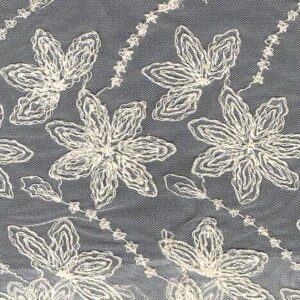Can You Mix Cotton, Batiste, and Sapphire Together?
Fabric compatibility is crucial in fashion and sewing, impacting the final product’s appearance, durability, and comfort. This article explores whether cotton, batiste, and sapphire can be mixed effectively, providing insights into their compatibility and practical sewing tips.
Compatibility Analysis
Yes, you can mix cotton, batiste, and sapphire fabrics together, but with some considerations. These fabrics can complement each other in terms of texture and appearance, but understanding their individual properties is essential for successful integration.
Texture and Weight
Cotton is a versatile and durable fabric, while batiste is a lightweight, semi-sheer fabric often made from cotton or a cotton blend. Sapphire, in this context, likely refers to a fabric with a synthetic fiber content, such as polyester, which can vary in weight and texture. The key is to match the weights and textures appropriately to avoid imbalance in the garment or item.
Stretch and Care Requirements
Cotton and batiste generally have little stretch, whereas sapphire fabrics might include elastane for added elasticity. Care requirements differ as well; cotton and batiste are typically machine washable, while synthetic sapphire fabrics may require gentler handling.
Fabric Properties Comparison Table
| Property | Cotton | Batiste | Sapphire (Synthetic) |
|---|---|---|---|
| Fiber Content | Natural | Natural/Synthetic | Synthetic |
| Weight and Thickness | Medium | Light | Varies |
| Breathability | High | High | Moderate |
| Stretch and Elasticity | Low | Low | Varies |
| Wrinkle Resistance | Moderate | Low | High |
| Care Instructions | Machine wash | Gentle wash | Varies (check label) |
| Durability | High | Moderate | High |
Benefits of Mixing These Fabrics
Mixing these fabrics can enhance texture and visual interest, offering improved comfort and performance. Cotton’s durability combined with batiste’s lightness and sapphire’s sheen can create garments with better drape and movement. This combination is cost-effective, versatile across seasons, and opens up diverse design possibilities.
Potential Challenges
Different Shrinkage Rates
Cotton tends to shrink more than synthetic sapphire, so pre-washing fabrics is crucial. Conflicting care requirements might also pose a challenge, as cotton and batiste require different washing conditions compared to synthetic fabrics.
Texture Clash and Seam Puckering
The difference in texture and weight can lead to seam puckering. Using appropriate interfacing and stabilizers can help mitigate this issue. Additionally, color bleeding or fading is a concern, so testing a small fabric swatch before combining is advisable.
Sewing & Styling Tips
When sewing these fabrics together, use a universal needle size 80/12 for cotton and batiste, and a ballpoint needle for synthetic sapphire. Choose polyester thread for its strength and flexibility. To prevent seam puckering, use a walking foot or engage the differential feed on your sewing machine.
For interfacing, choose lightweight fusible interfacing for batiste and cotton, and a knit interfacing for sapphire. Finish seams with a serger or zigzag stitch to prevent fraying. Opt for patterns that accommodate mixed textures, such as layered skirts or dresses.
Care & Maintenance Guide
Wash cotton and batiste in cold water on a gentle cycle, while synthetic sapphire may require hand washing or a delicate machine cycle. Air-dry these fabrics to prevent damage, and use a low heat setting for ironing. For stain removal, treat each fabric according to its specific needs, using mild detergents and avoiding harsh chemicals.
FAQ Section
-
Can you wash cotton and batiste together?
Yes, but use a gentle cycle and cold water to prevent shrinkage and damage. -
Will cotton shrink more than sapphire?
Yes, cotton is more prone to shrinkage, so pre-wash it before sewing. -
What needle size should I use for sewing these fabrics together?
Use a universal needle size 80/12 for cotton and batiste, and a ballpoint needle for sapphire. -
Can you mix cotton and sapphire in one garment?
Yes, but ensure the textures and weights are compatible. -
How do you prevent seam puckering when combining these fabrics?
Use a walking foot and appropriate interfacing to stabilize the seams. -
Is it okay to mix these fabrics for upholstery?
Mixing these fabrics for upholstery is possible but ensure durability and compatibility with the intended use. -
What’s the best way to finish seams with these fabrics?
Use a serger or zigzag stitch to prevent fraying and maintain seam integrity.
By understanding the properties and compatibility of cotton, batiste, and sapphire, you can create unique and functional garments or home decor items. With the right techniques and care, these fabrics can be successfully combined for a variety of creative projects.


Leave a Reply